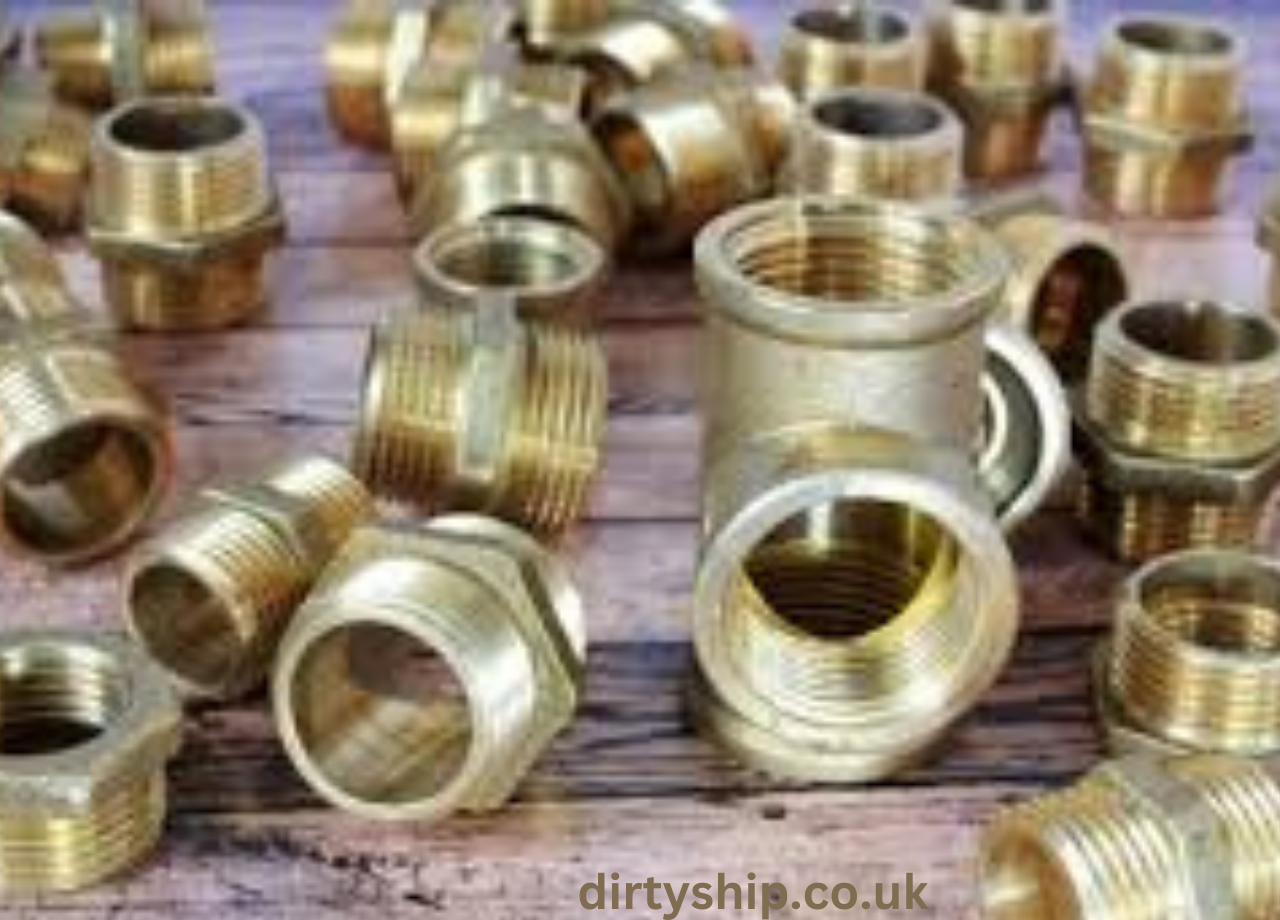When it comes to plumbing, gas lines, and various industrial applications, brass fittings have become a go-to solution for many professionals and DIY enthusiasts. The durability, versatility, and corrosion resistance of brass make it one of the most popular materials for manufacturing fittings. In this comprehensive article, we will explore the world of brass fittings, discussing their advantages, applications, and different types. By the end of this article, you will have a deep understanding of why brass fittings are the best choice for your next project.
Table of Contents
What Are Brass Fittings?
Brass fittings are components used to connect, secure, or terminate pipes and tubing in various systems. These fittings are made primarily from brass, an alloy consisting mainly of copper and zinc. The composition of brass provides it with unique properties such as corrosion resistance, high strength, and excellent conductivity. Due to these characteristics, brass fittings are widely used in plumbing, heating, and cooling systems, as well as in industrial applications.
Why Choose Brass Fittings?
There are several reasons why brass fittings stand out in the market compared to other materials like plastic, copper, or steel. Let’s dive into the main advantages of choosing brass fittings:
1. Corrosion Resistance
One of the major benefits of brass fittings is their excellent resistance to corrosion. Brass doesn’t rust, which makes it ideal for water supply systems, gas lines, and outdoor applications. This corrosion resistance ensures the longevity of brass fittings, making them a cost-effective solution over time.
2. Durability
Brass is an incredibly durable material. Its toughness makes it resistant to physical damage, which is crucial in high-pressure systems. Whether used in residential plumbing or industrial machinery, brass fittings can withstand substantial stress without breaking or warping.
3. High Temperature Tolerance
Brass fittings can endure high temperatures, which is essential in applications involving hot water or steam. Unlike plastic or rubber components, brass doesn’t degrade when exposed to heat, ensuring consistent performance in demanding environments.
4. Versatility
From compression fittings to flare fittings, brass fittings come in a variety of designs. This versatility allows brass fittings to be used in multiple systems, whether it’s connecting pipes in a home plumbing system or integrating components in an industrial setup.
5. Leak-Proof Connections
Brass fittings are designed to create secure, leak-proof connections. Their threading and manufacturing precision ensure a tight seal, which is especially important for gas lines and water systems where leaks can lead to serious safety hazards.
6. Cost-Effective
Although brass fittings may have a higher initial cost compared to plastic or steel, their durability and resistance to wear and tear make them a long-term investment. The reduced need for replacements and repairs saves both time and money.
Types of Brass Fittings
Brass fittings come in many forms, each designed for specific applications. Understanding the various types will help you choose the best brass fitting for your project.
1. Compression fittings
Compression fittings are commonly used in plumbing systems to connect pipes. They consist of a nut, a compression ring, and a body. When the nut is tightened, the ring compresses against the pipe, forming a leak-proof seal.
2. Flare Fittings
Flare fittings are commonly utilized in high-pressure settings, like gas pipelines. These fittings create a tight seal by flaring the end of the pipe and screwing a matching nut onto it.
3. Threaded Fittings
Threaded brass fittings are widely used in plumbing systems. These fittings have threads on both ends, allowing them to be screwed into pipes or other fittings. They are available in various thread sizes and designs, such as male or female threads.
4. Elbow fittings
Elbow brass fittings are used to change the direction of a pipe. These fittings come in various angles, such as 45 degrees or 90 degrees, to help navigate complex piping layouts.
5. Tee Fittings
Tee fittings have a T-like shape and enable a single pipe to branch off into two distinct lines. They are ideal for branching off water or gas lines in plumbing and industrial systems.
6. Coupling Fittings
Coupling brass fittings are used to join two pipes together. They come in various designs, such as straight or reducing couplings, depending on whether the pipes have the same or different diameters.
7. Adapter Fittings
Adapter brass fittings are used to connect pipes of different types, such as transitioning from copper to PVC. These fittings ensure a smooth connection between dissimilar materials, preventing leaks and maintaining system integrity.
Applications of Brass Fittings
Brass fittings are highly adaptable and are utilized in numerous applications across various industries. Here are some of the most frequent uses.
1. Plumbing Systems
Brass fittings are commonly found in both residential and commercial plumbing setups. They serve the purpose of connecting water supply lines, faucets, and valves. Their durability and corrosion resistance make them ideal for both hot and cold water applications.
2. Gas Lines
Due to their high strength and ability to create leak-proof connections, brass fittings are commonly used in gas lines. They are resistant to gas corrosion, ensuring that gas flows smoothly without leakage.
3. HVAC Systems
Brass fittings are also used in heating, ventilation, and air conditioning (HVAC) systems. They help connect pipes in high-temperature environments, providing a secure and leak-free solution for hot water and steam systems.
4. Industrial Machinery
Brass fittings are used in various industrial applications, such as hydraulic systems, chemical processing, and oil refining. Their durability and resistance to harsh chemicals make them suitable for these demanding environments.
5. Marine Applications
The corrosion resistance of brass fittings makes them ideal for marine environments, where exposure to water and salt can cause other materials to degrade quickly. Brass fittings are often used in boats and other marine equipment to ensure longevity.
FAQs About Brass Fittings
1. Are brass fittings better than copper fittings?
Brass fittings are generally more durable and versatile than copper fittings. While copper is commonly used in plumbing, brass is more resistant to corrosion and physical damage, making it a better option for many applications.
2. Can brass fittings be used with PVC pipes?
Yes, brass fittings can be used with PVC pipes, but you’ll need an adapter fitting to ensure a secure connection. These adapter fittings prevent leaks and maintain the integrity of the system.
3. How long do brass fittings last?
With proper installation and maintenance, brass fittings can last for decades. Their durability and resistance to corrosion make them a long-lasting solution for plumbing and industrial systems.
4. Are brass fittings safe for drinking water?
Yes, brass fittings are generally safe for drinking water. However, it’s important to choose lead-free brass fittings, as older fittings may contain traces of lead, which can be harmful if leached into the water supply.
5. How do I install brass fittings?
The installation process for brass fittings depends on the type. For compression fittings, tighten the nut until the compression ring forms a seal. For threaded fittings, apply Teflon tape to the threads before screwing them together to ensure a leak-proof connection.
Conclusion
Brass fittings are an essential component in many plumbing, gas, and industrial systems. Their durability, corrosion resistance, and versatility make them the ideal choice for a wide range of applications. Whether you’re working on a home plumbing project or installing complex industrial machinery, brass fittings provide a reliable and long-lasting solution. By understanding the different types of brass fittings and their uses, you can make informed decisions for your next project.
Brass fittings are the backbone of any high-quality system, ensuring leak-proof connections and long-term performance. So, next time you’re faced with a plumbing or industrial challenge, consider the benefits of brass fittings.
You can see the latest updates on: DirtyShip



